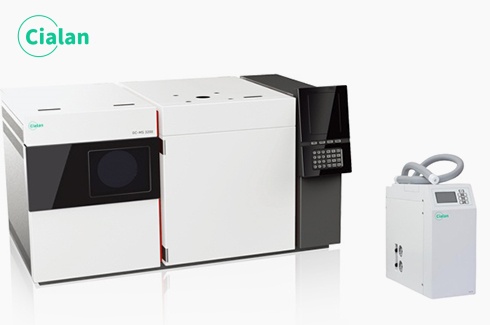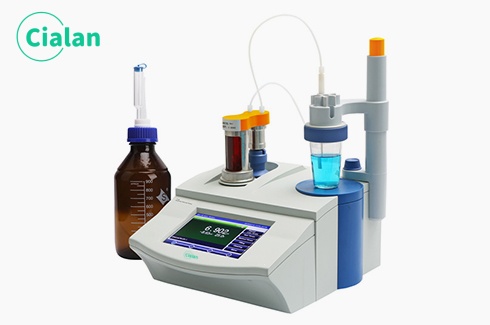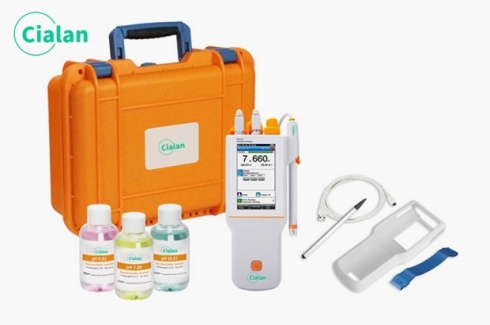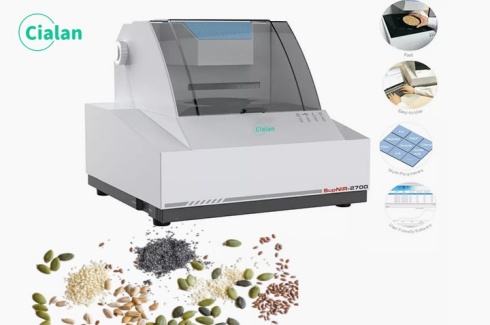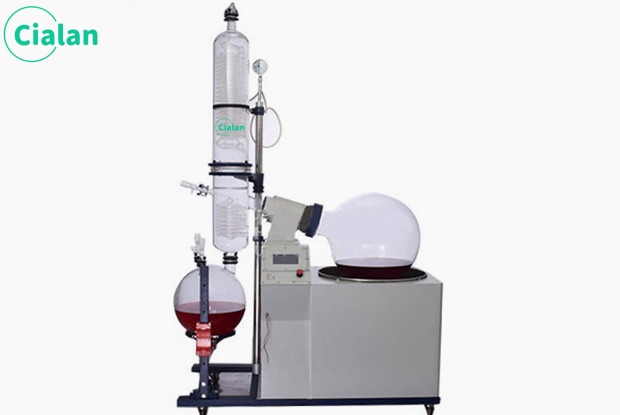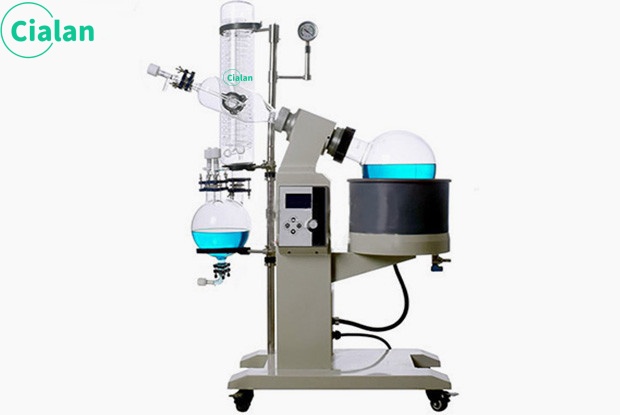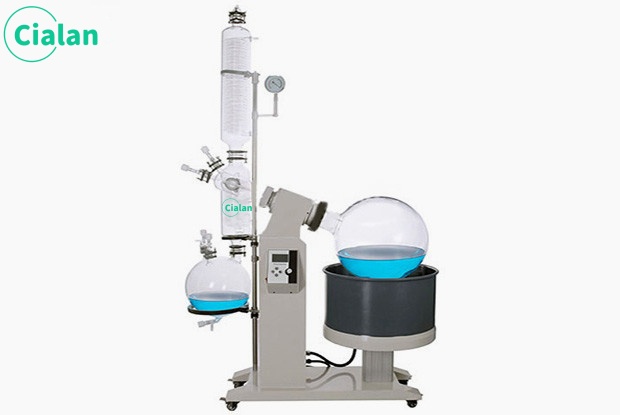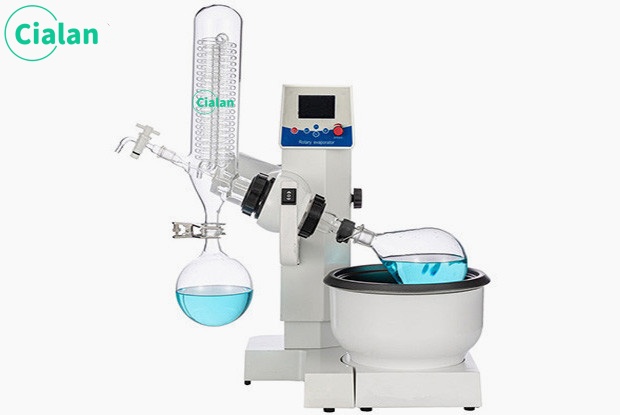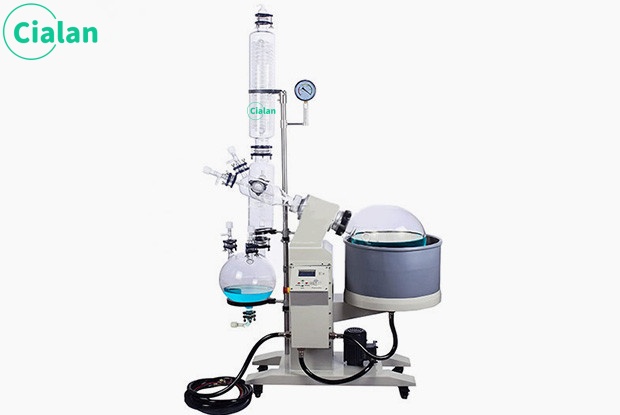How to operate an explosion-proof rotary evaporator?
Basic principles of explosion-proof rotary evaporator.
1. It uses a large-capacity and large-diameter rotary evaporation bottle with a large evaporation area; the pressure is reduced to the oil tank and heated while rotating to make the solution diffuse and evaporate efficiently. It is mainly used for continuous distillation of large amounts of volatile solvents under reduced pressure conditions. In particular, the reaction product can be separated and purified by concentrating the extract and distilling the receiving liquid during chromatographic separation.
2. The basic principle is vacuum distillation, that is, under reduced pressure, when the solvent is distilled, the distillation flask is continuously rotating and the solvent is continuously evaporated, thereby obtaining a concentrated solution. It is suitable for use in pilot workshops and factory-level reactions in explosion-proof areas. In addition to ensuring high vacuum, constant rotational speed, and constant temperature, ruggedness, excellent performance, and ease of operation are also necessary.
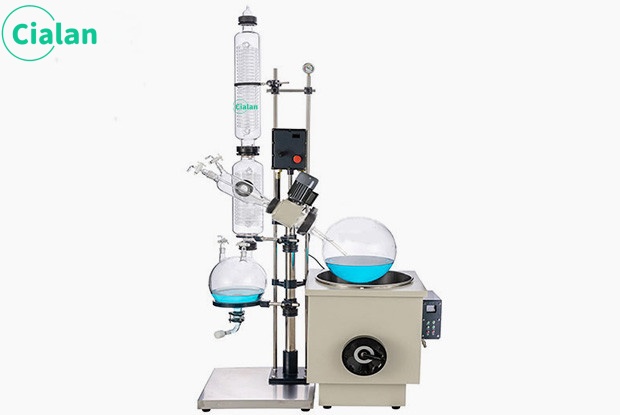
Application fields.
Explosion-proof rotary evaporators are mainly used for testing, R&D, and production in pharmaceutical, chemical, biological products, and other industries. It uses the principles of constant temperature heating and thin film evaporation to perform operations such as evaporation, concentration, crystallization, drying, separation, and solvent recovery of raw materials under vacuum and negative pressure conditions. All parts in contact with the materials are made of high-boron materials that are resistant to high temperatures and corrosion. Silica glass and polytetrafluoroethylene materials are particularly suitable for the concentration and purification of biological products that are easily decomposed and denatured and are not prone to chemical reactions with various materials.
Performance characteristics:
1. The PTEE discharge valve is corrosion-resistant and pollution-free.
2. The outer protective cover of the heating pot prevents burns.
3. The water bath is electrically lifted and lowered for easy use.
4. Teflon and fluoro rubber double rotary seals ensure high vacuum.
5. Introducing foreign advanced frequency conversion control systems and temperature control systems, which are accurate and reliable.
6. There is a vacuum switching valve, which allows continuous collection without affecting the system vacuum and solution distillation.
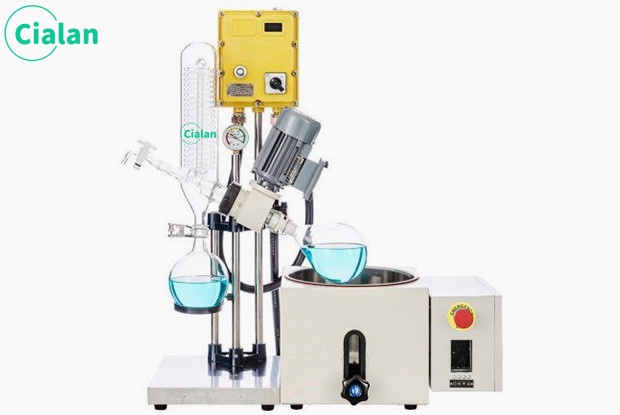
Operation precautions for explosion-proof rotary evaporator.
1. Height adjustment: automatic lifting, turn on the power switch and press the lifting button to automatically adjust the height;
2. Water must be added to the constant temperature water bath before power is turned on, and dry heating without water is not allowed;
3. Each grinding port, sealing surface sealing ring and joint must ensure that there is no air leakage; if there is air leakage, vacuum grease can be applied to the joint.
Operating steps.
1. Vacuuming: After opening the vacuum pump, you find that the vacuum cannot be applied. You should check whether the bottle mouths are sealed well, whether the vacuum pump itself is leaking, and whether the sealing ring at the shaft is intact. A vacuum switch connected in series with the external vacuum tube can improve the recovery rate. and evaporation rate.
2. Feeding: Using the system vacuum negative pressure, the liquid material can be sucked into the rotating bottle with a hose on the feeding port (4). The liquid material should not exceed half of the rotating bottle. This instrument can continuously add materials. When adding materials, be sure to turn off the vacuum pump; stop heating; after evaporation stops, slowly open the tube cock to prevent backflow.
3. Heating: This instrument is equipped with a specially designed water bath. Water must be added first and then powered on. The temperature control scale 0-99°C is available for reference. Due to the existence of thermal inertia, the actual water temperature is about 2 degrees higher than the set temperature. The set value can be corrected during use, for example: you need the water temperature to be 1/3-1/2. Unplug the power plug after use.
4. Rotation: Turn on the switch of the electric control box and adjust the knob to the optimal evaporation speed. Be careful to avoid vibration fluctuations in the water bath.
5. Connect the cooling water.
6. Recover the solvent: Turn off the vacuum pump, turn on the feeding switch to deflate, and take out the solvent in the collection bottle.
1. It uses a large-capacity and large-diameter rotary evaporation bottle with a large evaporation area; the pressure is reduced to the oil tank and heated while rotating to make the solution diffuse and evaporate efficiently. It is mainly used for continuous distillation of large amounts of volatile solvents under reduced pressure conditions. In particular, the reaction product can be separated and purified by concentrating the extract and distilling the receiving liquid during chromatographic separation.
2. The basic principle is vacuum distillation, that is, under reduced pressure, when the solvent is distilled, the distillation flask is continuously rotating and the solvent is continuously evaporated, thereby obtaining a concentrated solution. It is suitable for use in pilot workshops and factory-level reactions in explosion-proof areas. In addition to ensuring high vacuum, constant rotational speed, and constant temperature, ruggedness, excellent performance, and ease of operation are also necessary.

Application fields.
Explosion-proof rotary evaporators are mainly used for testing, R&D, and production in pharmaceutical, chemical, biological products, and other industries. It uses the principles of constant temperature heating and thin film evaporation to perform operations such as evaporation, concentration, crystallization, drying, separation, and solvent recovery of raw materials under vacuum and negative pressure conditions. All parts in contact with the materials are made of high-boron materials that are resistant to high temperatures and corrosion. Silica glass and polytetrafluoroethylene materials are particularly suitable for the concentration and purification of biological products that are easily decomposed and denatured and are not prone to chemical reactions with various materials.
Performance characteristics:
1. The PTEE discharge valve is corrosion-resistant and pollution-free.
2. The outer protective cover of the heating pot prevents burns.
3. The water bath is electrically lifted and lowered for easy use.
4. Teflon and fluoro rubber double rotary seals ensure high vacuum.
5. Introducing foreign advanced frequency conversion control systems and temperature control systems, which are accurate and reliable.
6. There is a vacuum switching valve, which allows continuous collection without affecting the system vacuum and solution distillation.

Operation precautions for explosion-proof rotary evaporator.
1. Height adjustment: automatic lifting, turn on the power switch and press the lifting button to automatically adjust the height;
2. Water must be added to the constant temperature water bath before power is turned on, and dry heating without water is not allowed;
3. Each grinding port, sealing surface sealing ring and joint must ensure that there is no air leakage; if there is air leakage, vacuum grease can be applied to the joint.
Operating steps.
1. Vacuuming: After opening the vacuum pump, you find that the vacuum cannot be applied. You should check whether the bottle mouths are sealed well, whether the vacuum pump itself is leaking, and whether the sealing ring at the shaft is intact. A vacuum switch connected in series with the external vacuum tube can improve the recovery rate. and evaporation rate.
2. Feeding: Using the system vacuum negative pressure, the liquid material can be sucked into the rotating bottle with a hose on the feeding port (4). The liquid material should not exceed half of the rotating bottle. This instrument can continuously add materials. When adding materials, be sure to turn off the vacuum pump; stop heating; after evaporation stops, slowly open the tube cock to prevent backflow.
3. Heating: This instrument is equipped with a specially designed water bath. Water must be added first and then powered on. The temperature control scale 0-99°C is available for reference. Due to the existence of thermal inertia, the actual water temperature is about 2 degrees higher than the set temperature. The set value can be corrected during use, for example: you need the water temperature to be 1/3-1/2. Unplug the power plug after use.
4. Rotation: Turn on the switch of the electric control box and adjust the knob to the optimal evaporation speed. Be careful to avoid vibration fluctuations in the water bath.
5. Connect the cooling water.
6. Recover the solvent: Turn off the vacuum pump, turn on the feeding switch to deflate, and take out the solvent in the collection bottle.



